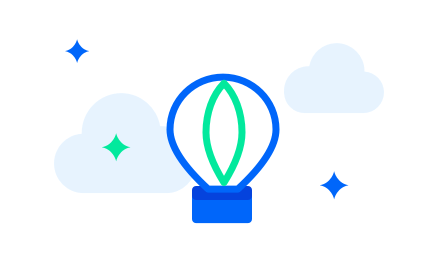Aug 20, 2025
5 min read
How to Get a Business Loan for Your Laundromat in 5 Steps
Running a laundromat business often requires significant upfront and ongoing capital....
Read story

Paying off debt can feel overwhelming, especially when balances are spread across credit cards, loans, and other obligations. But with a clear plan and the right strategies, you can start making consistent progress and take control of your finances. Whether you’re managing high-interest credit cards, personal loans, or business debt, a structured approach can reduce stress and save money over time.
This guide covers 10 practical tips to help you pay off debt more efficiently. From budgeting and repayment strategies to income-boosting ideas and smart financial habits, each tip is designed to bring you closer to a debt-free future.
Before you can effectively pay off debt, you need to understand your full financial picture. That starts with building a detailed budget. A budget shows exactly how much money is coming in, what’s going out, and where adjustments can be made to free up funds for repayment. Without it, you’re just guessing—and that can lead to overspending or missing opportunities to accelerate progress.
Begin by listing all sources of income, including your salary, freelance work, side jobs, or any recurring income streams. Then document every monthly expense, starting with the essentials: rent or mortgage, utilities, groceries, insurance, transportation, and loan payments. Once your needs are accounted for, review your discretionary spending—things like streaming services, dining out, or retail purchases—and identify areas where you can cut back without making dramatic lifestyle changes.
The goal is to create a monthly plan that prioritizes debt payments while still covering your core needs. A well-structured budget helps you stay accountable, prevents unnecessary spending, and creates a roadmap you can stick to. As your income or expenses change, continue updating your budget to keep it realistic and effective.
One of the most popular and psychologically motivating strategies for paying off debt is the debt snowball method. This approach focuses on building momentum by paying off your smallest debts first, regardless of interest rates. The idea is that by eliminating individual balances quickly, you create a sense of accomplishment that keeps you motivated to stick with your plan.
To use the snowball method, start by listing all of your debts from smallest to largest balance. Make minimum payments on all of them except for the smallest one. Direct any extra money in your budget toward paying that smallest debt off as quickly as possible. Once it’s gone, take the payment you were making on that debt and roll it into the next smallest balance. This process continues, with each payment “snowballing” into the next, until all debts are paid.
This strategy works especially well for people who need quick wins to stay motivated. While it may not save the most money on interest, the psychological boost of knocking out entire balances can be a powerful tool for building momentum and staying consistent.
If your top priority is saving money on interest, the debt avalanche method may be the better strategy. Unlike the snowball method, which focuses on paying off the smallest balances first, the avalanche method targets debts with the highest interest rates. Over time, this can reduce the total amount you pay, especially if you’re carrying high-interest credit card balances or personal loans.
To implement this approach, start by listing all your debts in order of interest rate, from highest to lowest. Make the minimum payment on each one, but direct any extra funds toward the debt with the highest interest rate. Once that’s paid off, move to the next highest rate, and so on. By prioritizing interest-heavy debts, you reduce the cost of borrowing more efficiently.
The avalanche method requires patience, especially if your highest-interest debt also has a large balance. Unlike the snowball method, it may take longer to pay off your first loan. But for those who are disciplined and focused on long-term savings, the avalanche strategy can make a meaningful financial difference.
If you’re juggling multiple debts with different due dates and interest rates, debt consolidation could simplify your financial life. This strategy involves combining several debts—often high-interest credit cards or personal loans—into a single loan with one monthly payment, ideally at a lower interest rate.
Debt consolidation can make it easier to manage your payments and may reduce the total amount of interest you pay over time. For example, if you’re carrying balances on three credit cards with rates above 20%, consolidating them into a personal loan with a fixed rate of 10% could significantly cut your interest costs. It can also reduce the stress of keeping track of multiple due dates and minimum payments.
There are a few ways to consolidate debt. Personal loans from banks or online lenders are a common option. Balance transfer credit cards that offer a 0% introductory rate for a limited period are another. In some cases, home equity loans or lines of credit can be used for consolidation, though those come with added risk since your home is used as collateral.
Before moving forward, compare the interest rate, fees, and repayment terms of any consolidation loan. It’s also important to avoid running up new debt after consolidation, or you could end up in a worse position than where you started.
One of the simplest ways to make your debt more manageable is to ask for a lower interest rate. It may seem unlikely, but creditors are often willing to work with customers—especially those with good payment histories or improving credit scores. Even a small reduction in your interest rate can translate into meaningful savings over time.
Start by contacting your credit card issuer or loan provider directly. Be polite but direct, and explain that you’re trying to pay down your debt more aggressively. If you’ve made consistent on-time payments or improved your credit since opening the account, mention that as well. Lenders are more likely to reduce your rate if they see you as a responsible borrower who poses a low risk.
Lowering your interest rate not only reduces the total cost of your debt, it also allows more of your payment to go toward the principal balance each month. That means you can pay off your debt faster without increasing your monthly payment. If your request is declined, consider calling again later or speaking with a different representative. Persistence can pay off.
While cutting expenses is important, increasing your income can have an even greater impact on how quickly you pay off debt. More income means more cash available to put toward your balances each month—accelerating your progress and reducing the total interest you’ll pay.
Start by looking for opportunities to boost your earnings through your current job. This could mean asking for a raise, working overtime, or taking on additional responsibilities that lead to a bonus or promotion. If that’s not feasible, consider earning extra income through a side hustle or finding paths towards passive income. Freelance work, rideshare driving, selling products online, or offering services in your community are just a few ways to generate extra cash.
Even small amounts can add up. An additional $200 per month directed toward your highest-interest debt could shave months off your repayment timeline. The key is to treat the extra income as a tool for debt reduction—not as a license to increase your spending. Committing these funds to your repayment plan can create momentum and help you stay focused on your financial goals.
Reducing your spending is one of the most immediate ways to free up money for debt repayment. While big lifestyle changes aren’t always necessary, identifying and cutting out non-essential expenses can help you redirect funds toward your financial goals without sacrificing your core needs.
Start by reviewing your recent bank and credit card statements. Look for recurring charges like streaming services, subscriptions, or memberships you rarely use. Daily habits, such as frequent takeout or impulse shopping, can also add up quickly. By scaling back on these extras—even temporarily—you can make room in your budget for larger or more frequent debt payments.
It’s not about depriving yourself, but about aligning your spending with your priorities. Small cuts across multiple categories can create meaningful monthly savings. And once your debt is under control, you’ll have the freedom to reintroduce some of those expenses with less financial pressure.
Consistency is key when it comes to paying off debt, and automating your payments can help ensure you never miss a due date. Most lenders and credit card issuers offer the option to set up automatic payments directly from your bank account. This simple step helps you stay on track, avoid late fees, and protect your credit score.
When you automate payments, you eliminate the risk of forgetting a due date or making a last-minute transfer. It also encourages discipline, since the money is withdrawn on a fixed schedule. Just make sure you have enough funds in your account each month to avoid overdraft fees or failed payments.
If possible, consider automating more than just the minimum payment. Scheduling fixed higher payments—especially if you’re not using the card anymore—can help you reduce your balance faster without the temptation to spend that extra money elsewhere.
One of the most important parts of paying off debt is making sure you’re not adding more along the way. It’s easy to undo progress by continuing to use credit cards or taking out new loans, especially if spending habits haven’t changed. To break the cycle, it’s essential to pause new borrowing while you focus on eliminating existing balances.
Start by identifying the spending triggers that led to the debt in the first place. Was it unexpected expenses, impulse purchases, or simply relying on credit to cover regular bills? Once you understand the root causes, you can start to build better financial habits and avoid falling into the same patterns. Putting credit cards out of reach, using cash or debit for everyday purchases, and sticking to your budget are good places to start.
It’s also helpful to view debt repayment as a reset period—a time to rebuild not just your finances but your relationship with money. Avoiding new debt allows your efforts to have a lasting impact and sets the stage for a healthier financial future once your balances are paid off.
If your debt feels unmanageable or you’re unsure where to start, there’s no shame in asking for help. Financial professionals and credit counselors can provide objective guidance, help you understand your options, and work with you to develop a personalized repayment strategy.
Nonprofit credit counseling agencies can assist with budgeting, negotiating with creditors, and even enrolling you in a debt management plan if appropriate. These services are often free or low-cost, and they can make a big difference—especially if you’re overwhelmed or falling behind on payments.
In more serious cases, such as when debt is accompanied by legal action or collections, speaking with a financial advisor or debt attorney may be necessary. The key is to recognize when your situation would benefit from outside expertise and take action before things get worse.
Reaching out doesn’t mean you’ve failed—it means you’re serious about fixing the problem and finding a sustainable solution.

Aug 20, 2025
5 min read
Running a laundromat business often requires significant upfront and ongoing capital....
Read story

Jul 09, 2025
5 min read
Business loans can be a critical source of working capital, helping...
Read story

Jun 18, 2025
5 min read
A personal guarantee is a legally binding promise made by a...
Read story

A funding specialist will get back to you soon.
If you can’t hang on then give us a call at (844) 284-2725 or complete your working capital application here.